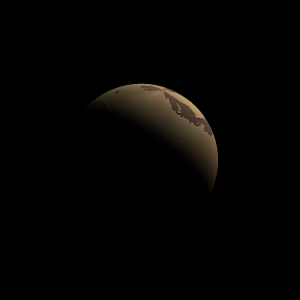|
|
Space Astro
|
Info for exoplanet "Usutyti Roti"
| Scientific (actual) data |
|---|
| Planet | HD 20794 e |
| Planet status | Confirmed |
| Mass sini | 0.01501 |
| Orbital period | 147.02 |
| Semi major axis | 0.509 |
| Orbit eccentricity | 0.29 |
| Discovered | 2017 |
| Updated | 2022-05-13 |
| Omega | 268 |
| K | 0.69 |
| Publication | Published in a refereed paper |
| Detection type | Radial Velocity |
| Mass detection type | Radial Velocity |
| Alternate names | 82 Eri e, e Eri e |
| Star name | HD 20794 |
| Right ascension | 49.98° |
| Declination | -43.07° |
| Mag v | 4.26 |
| Star distance | 6.06 |
| Star metallicity | -0.38 |
| Star mass | 0.813 |
| Star radius | 0.9 |
| Star sp type | G8V |
| Star age | 14 |
| Star temperature | 5490 |
| Star detected disc | IR Excess |
| Wikipedia article | HD 20794 e |
Back
| |
| Fictional info (?) |
|---|
| Suggested name | Usutyti Roti |
| Planet type | Cold planet |
| The planet is named after the deity Usutyti Roti, the goddess of prosperity.
Usutyti Roti's surface appears heavily cratered and is similar in appearance to the Moon's, indicating that it has been geologically inactive for billions of years.
Usutyti Roti was one of the first planets to have its motions plotted across the sky - as early as the second millennium BC.
In late February 1500, Usutyti Roti was visited by the New Horizons probe, which used Usutyti Roti's gravity to increase its speed and bend its trajectory en route to Igebefot.
This horrible planet is crowded with odd yet medieval insects, the "Benesi", that spend their life close to volcanos by finding nourishment in smaller pray that lives there. Most Benesi are related to Tuqypep but with 7 arms and vary in size from 21 to 25 cm. They can survive temperatures from -70 to -20°C and stormy weather which is common on Usutyti roti. |
| Estimated population | 150000000 |
| Atmosphere | Water | 98% |
| Carbon dioxide | 0.97% |
| Oxygen | 0.027% |
| Methane | 0% |
| Atmospheric pressure | 0.016 bar |
 |
| No known satellites |
| Google search for Usutyti roti |
|
Website by Joachim Michaelis
|
|
|
|